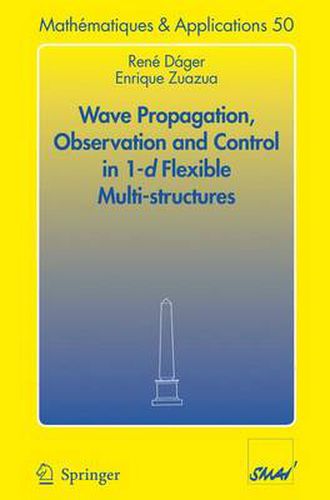Readings Newsletter
Become a Readings Member to make your shopping experience even easier.
Sign in or sign up for free!
You’re not far away from qualifying for FREE standard shipping within Australia
You’ve qualified for FREE standard shipping within Australia
The cart is loading…






This title is printed to order. This book may have been self-published. If so, we cannot guarantee the quality of the content. In the main most books will have gone through the editing process however some may not. We therefore suggest that you be aware of this before ordering this book. If in doubt check either the author or publisher’s details as we are unable to accept any returns unless they are faulty. Please contact us if you have any questions.
This book is devoted to analyze the vibrations of simpli?ed 1? d models of multi-body structures consisting of a ?nite number of ?exible strings d- tributed along planar graphs. We?rstdiscussissueson existence and uniquenessof solutions that can be solved by standard methods (energy arguments, semigroup theory, separation ofvariables,transposition,…).Thenweanalyzehowsolutionspropagatealong the graph as the time evolves, addressing the problem of the observation of waves. Roughly, the question of observability can be formulated as follows: Can we obtain complete information on the vibrations by making measu- ments in one single extreme of the network? This formulation is relevant both in the context of control and inverse problems. UsingtheFourierdevelopmentofsolutionsandtechniquesofNonharmonic Fourier Analysis, we give spectral conditions that guarantee the observability property to hold in any time larger than twice the total length of the network in a suitable Hilbert space that can be characterized in terms of Fourier series by means of properly chosen weights. When the network graph is a tree, we characterize these weights in terms of the eigenvalues of the corresponding elliptic problem. The resulting weighted observability inequality allows id- tifying the observable energy in Sobolev terms in some particular cases. That is the case, for instance, when the network is star-shaped and the ratios of the lengths of its strings are algebraic irrational numbers.
$9.00 standard shipping within Australia
FREE standard shipping within Australia for orders over $100.00
Express & International shipping calculated at checkout
This title is printed to order. This book may have been self-published. If so, we cannot guarantee the quality of the content. In the main most books will have gone through the editing process however some may not. We therefore suggest that you be aware of this before ordering this book. If in doubt check either the author or publisher’s details as we are unable to accept any returns unless they are faulty. Please contact us if you have any questions.
This book is devoted to analyze the vibrations of simpli?ed 1? d models of multi-body structures consisting of a ?nite number of ?exible strings d- tributed along planar graphs. We?rstdiscussissueson existence and uniquenessof solutions that can be solved by standard methods (energy arguments, semigroup theory, separation ofvariables,transposition,…).Thenweanalyzehowsolutionspropagatealong the graph as the time evolves, addressing the problem of the observation of waves. Roughly, the question of observability can be formulated as follows: Can we obtain complete information on the vibrations by making measu- ments in one single extreme of the network? This formulation is relevant both in the context of control and inverse problems. UsingtheFourierdevelopmentofsolutionsandtechniquesofNonharmonic Fourier Analysis, we give spectral conditions that guarantee the observability property to hold in any time larger than twice the total length of the network in a suitable Hilbert space that can be characterized in terms of Fourier series by means of properly chosen weights. When the network graph is a tree, we characterize these weights in terms of the eigenvalues of the corresponding elliptic problem. The resulting weighted observability inequality allows id- tifying the observable energy in Sobolev terms in some particular cases. That is the case, for instance, when the network is star-shaped and the ratios of the lengths of its strings are algebraic irrational numbers.